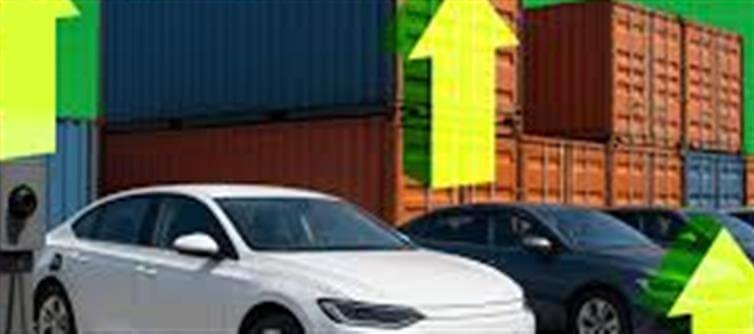
India’s auto sector showed a mixed performance in august 2025, with some automakers posting strong gains while others struggled in domestic markets. Exports and electric vehicles (EVs) emerged as key growth drivers, even as GST-related speculation tempered festive-season buying. Here’s a comprehensive roundup of the trends across passenger vehicles and two-wheelers.
1. Domestic Demand Slips Amid GST Speculation
Industry insiders said expectations of a possible 10% GST reduction on small vehicles led many buyers to postpone purchases. Automakers also moderated wholesale dispatches to manage dealer inventory, affecting overall volumes.
Passenger vehicle volumes: 3,30,000 units, down 7.3% YoY (compared to 3,56,000 units in august 2024).
Top five carmakers—Maruti Suzuki, hyundai, Tata Motors, Mahindra—posted lower domestic volumes.
Toyota Kirloskar Motor bucked the trend, recording steady growth.
This slowdown highlights how tax policy speculation directly impacts buyer behavior, particularly during the festive season.
2. Exports Cushion Domestic Slowdowns
While domestic sales slowed, exports helped automakers stay afloat.
Maruti Suzuki: Sold 1,80,683 units, down 0.6% YoY. Domestic sales slid 7.5%, but exports jumped 40% to 36,538 units.
Hyundai Motor India: Domestic sales fell to 44,001 units, yet exports rose 21% to 16,500 units, signalling India’s growing role as an export hub.
“Our goal is to establish india as a strategic manufacturing base for emerging economies,” said tarun Garg, hyundai Motor india COO.
Tata Motors: Domestic sales eased slightly, but EV sales surged to 8,540 units (44% growth).
Mahindra & Mahindra: SUV volumes dipped 9%, but EVs surged nearly tenfold to 3,495 units, showing rising acceptance of new-energy models.
Exports are playing an increasingly critical role in sustaining auto sector growth amid domestic volatility.
3. Electric vehicles Lead Growth
EV adoption continues to accelerate across passenger vehicles:
Tata Motors EVs: 8,540 units, 44% YoY growth.
Mahindra EVs: 3,495 units, nearly 10x increase.
JSW MG Motor India: Volumes jumped 52% to 6,578 units, driven by the Windsor EV.
Kia India: Carens Clavis EV deliveries reached 441 units, over 20x last year.
EVs are no longer niche; they are emerging as a key driver for automaker growth.
4. Two-Wheelers Keep Up the Momentum
The two-wheeler segment recorded strong double-digit growth, reflecting consistent demand across urban and rural markets.
TVS Motor Company: 5,09,536 units, up 30% YoY, marking its best august ever. EV sales reached 25,138 units.
Bajaj Auto: 4,17,616 units, up 5%, with exports up 29%, offsetting weak domestic sales.
Hero MotoCorp: 5,53,727 units, up 8% YoY. Registration data shows stable demand across regions despite monsoon challenges.
Two-wheelers continue to be a reliable growth segment, balancing slower passenger vehicle performance.
5. Automakers Adjust Strategies Amid Uncertainty
With GST rationalisation pending, automakers strategically adjusted wholesale dispatches to avoid inventory buildup:
M&M consciously reduced wholesale billing to minimize stock during GST speculation.
Industry insiders expect a boost in festive-season sales once tax rates are clarified.
This proactive inventory management helps companies navigate domestic demand volatility while maximizing festive opportunities.
6. Key Takeaways
Domestic PV sales dipped, while exports and EVs offset losses.
EV sales surge in both passenger vehicles and two-wheelers.
GST speculation delayed purchases, highlighting the sensitivity of buyers to tax policy.
Two-wheeler segment remains strong, supporting overall auto sector momentum.
Bottom Line:
August 2025 was a mixed month for India’s auto sector. While domestic passenger vehicle sales showed softness due to GST-related uncertainties, exports and EV adoption kept overall growth positive. Two-wheelers continued to shine, and automakers strategically managed inventory ahead of the festive season. With GST rationalisation expected soon, the sector is poised for a rebound, led by EVs and robust exports.
.jpg)




 click and follow Indiaherald WhatsApp channel
click and follow Indiaherald WhatsApp channel